Konya, Turkey 16 – 5/2016
Welcome to Konya, otherwise known as Iconium, and yes, we are still in Turkey, and history runs deep in this part of the world. Excavations have shown that the Konya region was inhabited during the Late Copper Age, around 3000 BC. The city came under the influence of the Hittites around 1500 BC. These were overtaken by the Sea Peoples around 1200 BC. Then there were the Cimmerian invaders in 690 BC and after, it was part of the Persian Empire, until Darius III was defeated by Alexander the Great in 333 BC. Fast forward a little. During the Byzantine Empire the town was destroyed several times by Arab invaders in the 7th–9th centuries. During the Roman Empire, under the rule of emperor Claudius, the city’s name was changed to Claudioconium, and during the rule of emperor Hadrianus to Colonia Aelia Hadriana. See what I mean about history?
Today Konya is one of the most devote Muslim cities in Turkey, but in Christian legend, Iconium was also the birthplace of Saint Thecla. The apostles Paul and Barnabas preached in Iconium during their first Missionary Journey in about 47–48 AD.
For Muslims and non-Muslims alike, the main reason to come to Konya is to visit the Mevlânâ Museum and to witness the famous Whirling Dervishes. The Mevlânâ Museum is one of the biggest pilgrimage centers in Turkey. More than 1.5 million people visit a year, most of them Turkish.
The Mevlânâ Museum is also the mausoleum of Jalal ad-Din Muhammad Balkhi-Rumi, a 13th-century Persian Sufi mystic also known as Mevlânâ or Rumi. At the entrance to the mausoleum, the Ottoman silver door bears the inscription, “Those who enter here incomplete will come out perfect”. We are now perfect!
Many of the exhibits are actually in small cells where the dervishes once lived, like monks in a monastery. Some rooms had life-size mannequins depicting everyday life scenes. There were examples of some of the traditional Turkish musical instruments we would hear later. In the mausoleum there is a casket containing strands of Mohammed’s beard, and a copy of the Koran so tiny that its author went blind writing it.
As interesting as the museum was, what we really came to see were the famous Whirling Dervishes. Just down the street we found easy parking at the modern Mevlânâ Cultural Center. So you might be wondering, what are these Whirling Dervishes all about? The members of the Mevlevi Order, named for their founder Mevlevi (Turkish) or Mevlânâ (Persian), belong to the Sunni or orthodox mainstream of Islam. Their ritual is an act of love and a drama of faith. The singing of poetry, rhythmic rotation, and music is mesmerizing, creating a synthesis that, according to the faithful, induces a feeling of soaring, of ecstasy, of mystical flight.
The basis of their worship stems from the belief that the fundamental condition of our existence is to revolve. Think about that. There is no object, no being, which does not revolve. The shared similarity between all created things is the revolution of the electrons, protons, and neutrons within the atoms that constitute their basic structure. From the smallest cell to the planets and the farthest stars, everything takes part in this revolving. Thus, the Whirling Dervishes participate consciously in the shared revolution of all existence. Cool huh?
The Mevlevi Sema ceremony represents a spiritual journey; the seeker’s turning toward God and the truth, a maturing through love, the transformation of self as a way of union with God, and the return to life as the servant of all creation. One of the beauties of this seven hundred year old ritual is the way that it unifies the three fundamental components of man’s nature; mind, emotion, and spirit, combining them in a practice and a worship that seeks the purification of all three in the turning towards Divine Unity. But most significantly, the enrichment of this earth and the well-being of humanity as a whole.
The Whirling Dervishes played a vitally important part in the evolution of Ottoman high culture. From the 14th to the 20th century, their impact on classical poetry, calligraphy, and the visual arts was profound, while music was perhaps their greatest achievement.
Interestingly, unlike the hymns we hear in Christian churches, since the dogmatists of Islam’s orthodoxy opposed music as being harmful to the listener and detrimental to religious life, no sacred music or mosque music evolved except for the Mevlud, a poem in praise of the Prophet Muhammad chanted on high occasions or as a requiem. Mevlânâ and his followers integrated music into their rituals as an article of faith. In his verses, Mevlânâ emphasized that music uplifts our spirit to realms above, and we hear tunes of the Gates of Paradise. Consequently, the meeting places of the dervishes became academies of art, music and dance.
- Driving through the farmland on our way to Konya we easily found wild camping on side roads.
- A local farmer and his son saw our truck and stopped by to wish us a good morning.
- The mausoleum of Jalal ad-Din Muhammad Balkhi-Rumi is part of the Mevlânâ Museum. He was a Persian Sufi mystic also known as Mevlânâ or Rumi.
- Konya is one of the most devote Muslim cities in Turkey. Women dress accordingly.
- Some rooms featured life-size mannequins going about the daily life of a dervish.
- There were examples of some of the musical instruments we would hear later.
- Many of the religious treasures were undoubtedly centuries-old.
- We were lucky to see this wedding couple.
- What an interesting head dress!
- The modern Mevlânâ Cultural Center is perfectly designed for the performance of the Whirling Dervishes.
- The ceremony begins with the master of ceremony reading from the Koran and singing of the Nat-i-Serif, a eulogy to the Prophet Muhammad.
- The music was mesmerizing. Twelve musicians played traditional Turkish instruments.
- As the ceremony begins, the Whirling Dervishes bow to each other honoring the spirit within.
- Before the actual dance, each member bows before the Sheikh who stands on a red sheepskin. He is understood to be a channel for the divine grace.
- As their arms unfold, the right hand opens to the skies in prayer, ready to receive God’s beneficence. The left hand, upon which his gaze rests, is turned towards the earth in a gesture of bestowal.
- The dance of the Whirling Dervishes in Konya represent a spiritual journey,
- The Sheikh and Dervishes complete their time together with the greeting of peace and then depart, accompanied by music.
- Returning to our home we found quiet peaceful parking in the huge visitors lot next to the Mevlânâ Cultural Center.
- Relaxing on the grass in front of the Mevlânâ Cultural Center, we were feeling perfect.



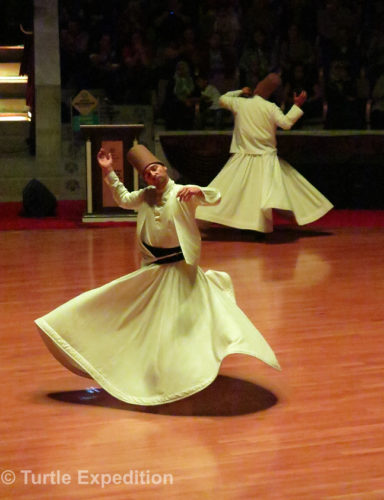
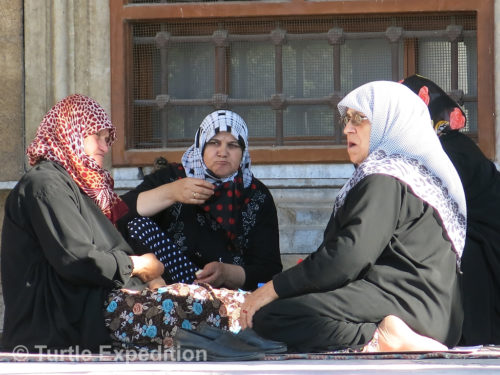
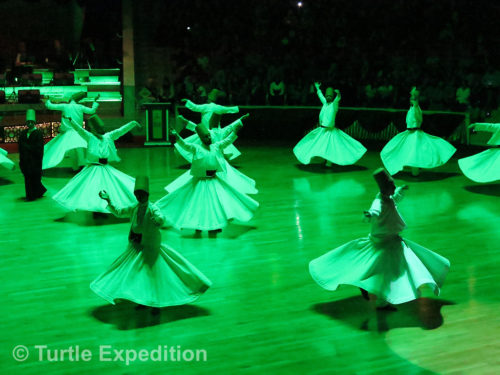
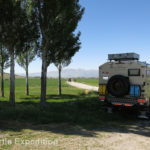
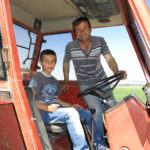
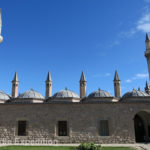
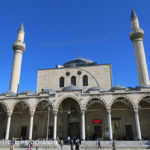
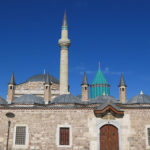
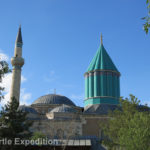
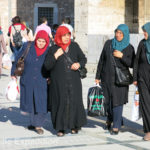
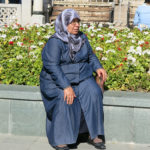
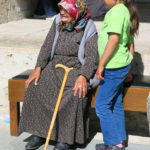
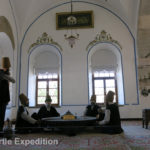
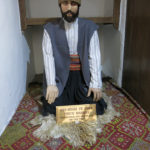
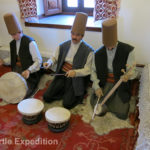
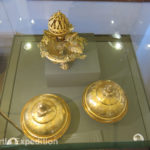
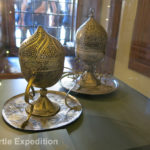
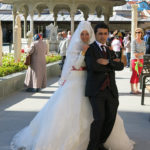
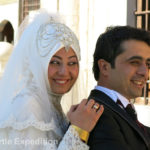
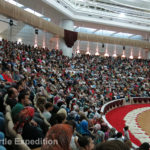
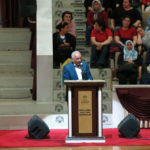
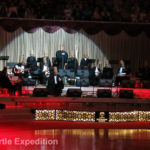
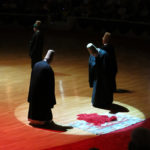
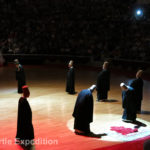
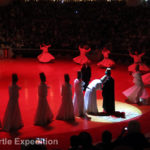
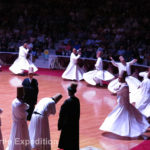
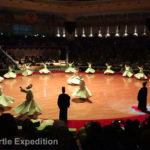
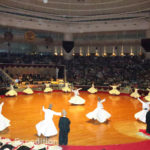
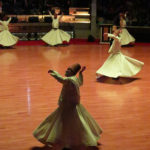
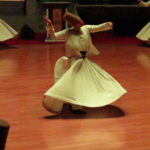
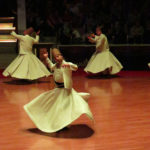
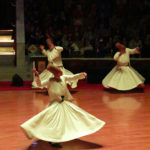
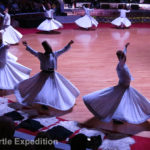
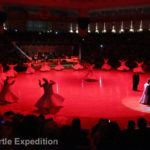
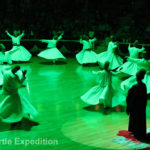
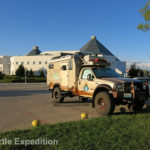
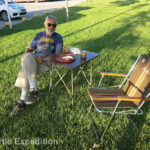





For Muslims and non-Muslims alike, the main reason to come to Konya, Turkey, is to visit the Mevlânâ Museum and… https://t.co/alsnt8cpOp
Juan Carlos Gracia liked this on Facebook.
Taffy Curtaz liked this on Facebook.
Annie Lehmkuhl Hendricks liked this on Facebook.
Matt Frick liked this on Facebook.
Thomas Woodson liked this on Facebook.
Nancy Winslow liked this on Facebook.
Tacoma White liked this on Facebook.
Kristy Judy liked this on Facebook.
Ildo Costa Nunes liked this on Facebook.
Francisco Guimaraes liked this on Facebook.
Ryan Sanders liked this on Facebook.
Jonathan Ehly liked this on Facebook.
Kevin Williams liked this on Facebook.
Erdem Önen liked this on Facebook.
Ann Trent liked this on Facebook.
Allen Anderson liked this on Facebook.
Martine Cos liked this on Facebook.
Rankin Jeffries liked this on Facebook.
Pascal Leclerc liked this on Facebook.
Alain Vadrouilleur liked this on Facebook.
Geniel Capondo liked this on Facebook.